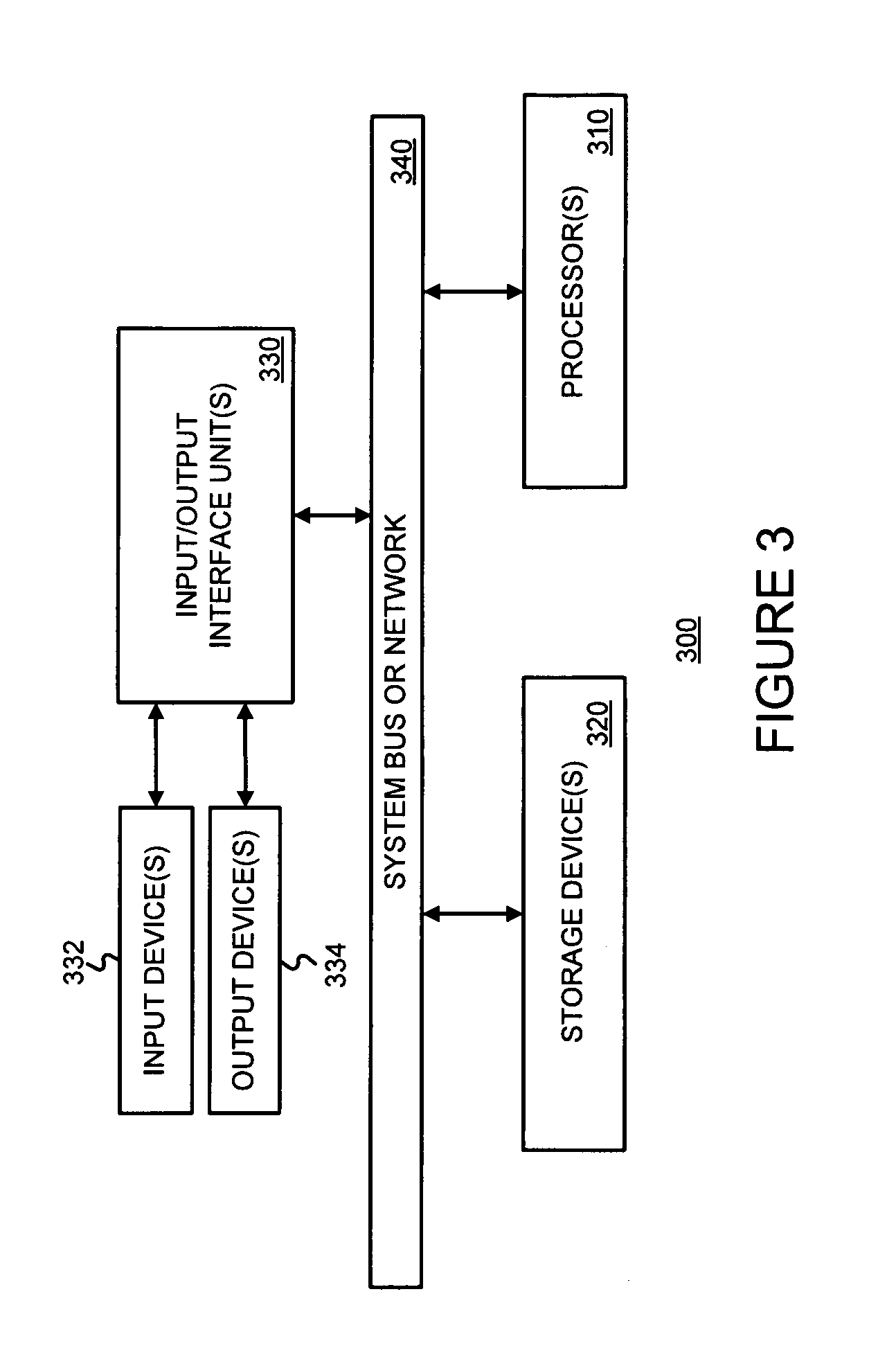Low complexity scheduling algorithm for a buffered crossbar switch with 100% throughput
a buffered crossbar switch and low complexity technology, applied in the field of switches, can solve the problems of complex scheduling algorithms used in switches with 100 % throughput, schedulers with simpler complexity, and delays that grow with n
- Summary
- Abstract
- Description
- Claims
- Application Information
AI Technical Summary
Problems solved by technology
Method used
Image
Examples
first embodiment
§ 6.2.1 CROSSPOINT BUFFER SIZE OF ONE
[0035]FIG. 5 is a flow diagram of an exemplary scheduling method 500, consistent with the present invention, for use with a buffered crossbar switch with a single-cell buffer at each crosspoint. For each input port, a queue length of a virtual output queue that was served in a last time slot and having a corresponding crosspoint buffer that was served in the last time slot is tracked. (Block 505) A first variable (Pi) is set to the queue length tracked if there is a virtual output queue that was served in the last time slot and that has a corresponding crosspoint buffer that was served in the last time slot; otherwise the first variable (Pi) is set to zero. (Block 510) For each output port, whether a corresponding crosspoint buffer was served in the last time slot is tracked. (Block 515).
[0036]A Hamiltonian walk schedule for each time slot is determined. (Block 520) Then, for each input port, a queue length of a virtual output queue correspondin...
second embodiment
§ 6.2.1 CROSSPOINT BUFFER SIZE OF MORE THAN ONE
[0047]FIG. 6 is a flow diagram of an exemplary scheduling method 600, consistent with the present invention, for use with a buffered crossbar switch with a multi-cell buffer at each crosspoint. For each input port, a queue length of a set of one or more virtual output queues having a corresponding non-empty crosspoint buffer that was served in the last time slot is tracked. (Block 605) A first variable (Pi) is set to a sum of the queue lengths tracked of the set of one or more virtual output queues if there is at least one virtual output queue having a corresponding non-empty crosspoint buffer that was served in the last time slot; otherwise, the first variable (Pi) is set to zero. (Block 610) For each output port, whether a corresponding crosspoint buffer was served in the last time slot is tracked. (Block 615).
[0048]A Hamiltonian walk schedule for each time slot is determined. (Block 620) Then, for each input port, a queue length of ...
PUM
 Login to View More
Login to View More Abstract
Description
Claims
Application Information
 Login to View More
Login to View More - R&D
- Intellectual Property
- Life Sciences
- Materials
- Tech Scout
- Unparalleled Data Quality
- Higher Quality Content
- 60% Fewer Hallucinations
Browse by: Latest US Patents, China's latest patents, Technical Efficacy Thesaurus, Application Domain, Technology Topic, Popular Technical Reports.
© 2025 PatSnap. All rights reserved.Legal|Privacy policy|Modern Slavery Act Transparency Statement|Sitemap|About US| Contact US: help@patsnap.com



